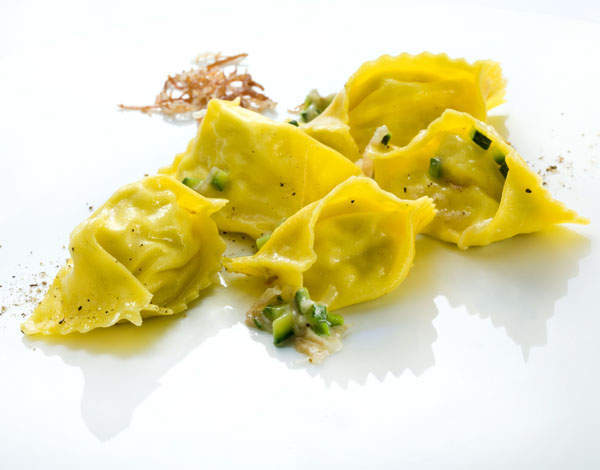

One of the most delicate balances in the culinary world is not between salt and sweet or length-of-queue and quality-of-food but between number of courses and size of portion.
In one of my earliest articles for Spear’s, I tried out a seven-course, thousand-pound-a-head meal at Vivat Bacchus in Farringdon; even in 2008, at the height of the boom, this was still rather vulgar. The ultimate problem was not vulgarity, however, but generosity. I think the restaurant figured that if you were paying that much, you should have as much as could fit onto a plate. Hence, an entire packet of linguine under my lobster. A cheese board of at least fifteen varieties. And a solid bottle of storied wine with each course.
I did not end up ill, but I did not end up far from ill either.
Thankfully, at more thoughtful establishments, such as Heinz Beck’s Apsleys at The Lanesborough, chefs recognise that quality and quantity may be inversely correlated.
Watched over by its Fragonard-meets-Banksy mural, underneath a rather grand conservatory roof, my companion and I enjoyed a rather more manageable seven courses, each with a glass of Italian wine. (I confess, I’m not much of a drinker so I took mere sips.)

Pictured above: Heros de Agostinis and Heinz Beck
One of my foodie bugbears has been the over-prominence of sweet notes in dishes; there are some restaurants which are not happy until a coconut foam has ruined your steak. Executive chef Heros de Agostinis did not fall into that trap, or rather matched sweet and savoury well: lobster salad with nectarine, celery purée and crispy Parma ham demands a sweetness, while the fennel and pink grapefruit with scallops for the next course balanced bitter and sweet.
The third course was pasta, but not just any pasta: Heinz Beck’s trademark fagottelli carbonara. You can conceive of these as posh ravioli, but they are so much more: within the delicate parcels is a Pecorino and egg-yolk mixture, while guanciale (Roman bacon) gives extra saltiness in the dressing.
I won’t say the rest of the meal passed in a pasta-haze, but the fagottelli are a pretty high peak to match. Rhug saddle of lamb followed roasted goose foie gras (not usually a favourite of mine, but here not too sickly), and somewhere there was seabass too.

By dessert, I had recovered myself for the milk chocolate, coconut and pineapple sorbet. I have experienced this dessert-combination fairly frequently over the past year, though I’m not complaining – I think coconut is a far-underused ingredient. A clever, quasi-Cubist dish, with interesting cubes and ovoids pointing into space, it was a simple conclusion. In fact, you might say the whole meal was simple: there may have been more ingredients in a single dish than in my kitchen cupboards, but the complexity never made itself feel unwelcome. The food was not bolshie with its own technique. And that is perhaps the best balance of all.






